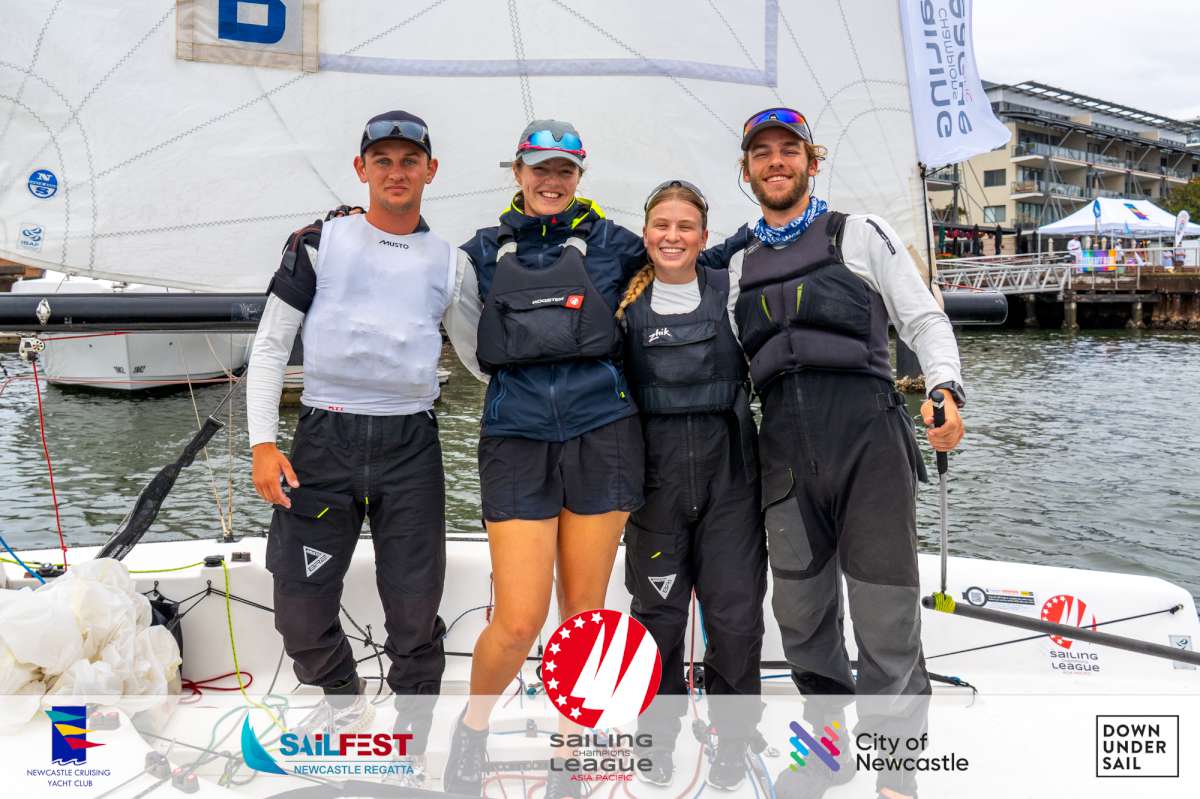After 48 hours racing, things are settling down. Aboard the Minis, they are all finding their own pace even if the pressure of the competition, sometimes added to a little seasickness for some, still causes some minor setbacks. The routine of daily tasks is not always completed, it happens that a meal gets skipped, or an invigorating nap is interrupted. We will have to wait until the fourth or fifth day for all the skippers to feel in tune with themselves.
While the Minis make good speed for the Cape Verde archipelago, we can imagine what the talk is about on Radio Cocotier, the VHF link between sailors. Besides the conversations about their day-to-day on board, often very basic – what did you eat, I wet my only duvet, it is already a filthy mess on board, Davy Beaudart’s abandonment no doubt took up a good part of the time spent on the air waves. On one hand, because it completely opens up the game in a race that some already believed decided, the other because it reminds everyone that an Atlantic crossing is long and many adventures can spice up the pilgrimage to Guadeloupe. Finally, Davy Beaudart has made many friends on the Mini circuit. There is no joy to be had in leaving a good mate on the wayside.
Heading south
North of latitude 24°N, the wind is increasingly dying down. The few competitors who set off from the Canaries after a forced stopover are struggling to get south, like Frederick de Mesel (Double Trouble), stuck in light winds off the Moroccan coast. All those north of that line are, on average, making progress at speeds that rarely exceed 7 knots, whereas their colleagues in the south are constantly flirting with 9 knots, so those further south and closest to the African coast are making the most headway.
Did I get it right?
To attempt to reach Guadeloupe, while avoiding being trapped by light winds, the racers are sailing in zigzag: when the shifts in the wind allow it, they tack back slightly into the west. For now, they have to tack a long way north. But they will have to reverse the trend and try to win in the west. The ranking in the coming days will depend in large part on the timing chosen by each competitor. Faced with this dilemma, some have decided to postpone the moment of gaining in the west. This is the case of Ian Lipinski (Entreprises Innovantes) and Julien Pulvé (Novintiss) in series boats that have managed to position themselves level with Benôit Hantzperg (YCA Dhumeaux Secours Populaire), but also with Edouard Golbery (Les Enfants du Canal) and Henri Marcelet (Region Nord Pas de Calais) sailing at the front of the pack. If their ranking in distance to the finish is not favourable to them, it is that they are farthest from the great circle, the direct route. But their position has a great advantage and could shortly prove to be winning.
In prototype, Frederic Denis (Nautipark) has managed a slightly more westerly course without losing his leading position. He is in an ideal position in view of the right turn that will have to be negotiated someday soon. Racing down the trade winds motorway, they are all dreaming of putting their right indicator on, but they will have to be careful not to end up on the emergency lane.
Ranking 2nd November at 16h (TU+1):
Prototypes (Ranking Eurovia Cegelec):
1 Frédéric Denis – 800 – Nautipark à 2483,6 milles de l’arrivée
2 Ludovic Méchin – 667 – Microvitae à 15,3 milles
3 Simon Koster – 888 – Eight Cube à 15,4 milles
4 Luke Berry – 753 – Association Rêves à 17,9 milles
5 Jean-Baptiste Daramy – 814 – Chocolats Paries à 20,6 milles
Séries (Ranking Ocean Bio-Actif)
1 Benoît Hantzperg – 871 – YCA Dhumeaux Secours Populaire à 2507,3 milles de l’arrivée
2 Tanguy Le Turquais – 835 – Terréal à 14 milles
3 Charly Fernbach – 869 – Le Fauffiffon Hénaff à 16,8 milles
4 Ian Lipinski – 866 – Entreprises Innovantes à 17,2 milles
5 Antonio Fontes – 745 – Vela Solidaria à 20,2 milles
– Mini Transat Media

























